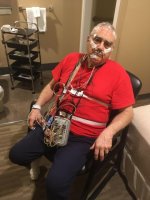You are using an out of date browser. It may not display this or other websites correctly.
You should upgrade or use an alternative browser.
You should upgrade or use an alternative browser.
What? Has Pat Become a Suicide Bomber?
- Thread starter Pat Anderson
- Start date
colbysmith
Active member
Sleep test. :wink:
Hey Pat, Looking pretty good there. Looks like your Tech did a wonderful job. So the proof is in the pudding, and the details are the important part.
As to going to sleep, it is rare that a sleep test patient does not go to sleep. Does happen, but rarely. Most folks have no idea how sleep deprived they are, and given the chance, will sleep readily. It is a "Sleep Test" so the information that is being looked for happens during sleep. There are other tests for insomnia and other sleep disorders, but for most, the determinations are made during a laboratory polysomnograph -- ah, "sleep test", and it is not unheard of to actually give the patient a mild sleep inducing medication if they do not fall asleep naturally within an hour or so. That is not counter productive to the PSG, (polysomnogram), and again, the information required is only available during the sleep stages of the patient.
There are some 108 Sleep Disorders and about 20% of them are directly diagnosed via the polysomnogram.
The after affects of the study prep all go away with a shower and shampoo, and if followed by a good breakfast, can be a good, even life changing experience. After all, how many tests have you taken in your life where you are encouraged to sleep through them? :wink:
Harvey
SleepyC :moon
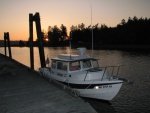
As to going to sleep, it is rare that a sleep test patient does not go to sleep. Does happen, but rarely. Most folks have no idea how sleep deprived they are, and given the chance, will sleep readily. It is a "Sleep Test" so the information that is being looked for happens during sleep. There are other tests for insomnia and other sleep disorders, but for most, the determinations are made during a laboratory polysomnograph -- ah, "sleep test", and it is not unheard of to actually give the patient a mild sleep inducing medication if they do not fall asleep naturally within an hour or so. That is not counter productive to the PSG, (polysomnogram), and again, the information required is only available during the sleep stages of the patient.
There are some 108 Sleep Disorders and about 20% of them are directly diagnosed via the polysomnogram.
The after affects of the study prep all go away with a shower and shampoo, and if followed by a good breakfast, can be a good, even life changing experience. After all, how many tests have you taken in your life where you are encouraged to sleep through them? :wink:
Harvey
SleepyC :moon

colbysmith
Active member
When I had my sleep test, I thought the same thing Bob stated. And I considered myself a light sleeper. However, I guess I did sleep. In the end, my sleep apnea was borderline severe with 90 events an hour. (That means 90 times I didn't breath. Not sure how long you have to go with out breathing before they consider it an event. ) With CPap, I now average anywhere between .2 and 3.0 on my AHI. (I'll let Harvey explain what that is. But I think it's non breathing events per hour.) So the Cpap machines really are a life saver. And I do feel a lot more rested when I sleep with the CPAP as opposed to without it. Colby
10 seconds in a non-breathing state is called a respiratory event. There can either be inspiratory effort or not. That is dependent on the type of apnea. The Apnea Hypopnea index, or AHI is the sum of the number of apneas (pauses in breathing) plus the number of hypopneas (periods of shallow breathing) occurring, on average, each hour. Apneas and hypopneas, collectively called events, must last at least 10 seconds to count as events. An AHI of 90 means that there is an "event" about every 30 seconds. That event is also paired with a drop in the oxygen saturation.
Short apnea periods, like 10 seconds do not usually result in very low saturation dips, 2-4 percent. I have seen apneas last nearly 2 minutes, (1:40 or 100 seconds). When running studies I would often stop my breath and see if I could hold it as long as the patients apnea was. A long event 45 seconds or longer generally results in a much more significant desaturation. I have seen desats down into the 40's. Those events are usually terminated with a fairly big snort and gasp.
Most of the time, even short apneic events will cause a brain arousal, causing the brain to wake up, and then go back into sleep through the stages, and that is what causes the frequent daytime sleepiness associated with sleep apnea. There are multiple causes of apnea, so it is not always obstructive (the kind most associated with snoring), but all sleep apneas are treatable. The oxygen desaturation is dependent on 2 things: The length of time there is no air movement, and the condition of the pulmonary system, i.e., young healthy lungs will hold the saturation higher longer than older, less healthy or damaged lungs.
The Medicare standard is that they treat anyone with an AHI of 5 or greater. With proper effective treatment the AHI should come in well under 5. Colby, with your 0.2 to 3.0 range is a very good result. My personal report was an AHI of close to 50, desats to 70-ish (Which was the main cause of the severe morning headaches) and with my CPAP I get a morning score range of 0.1 to about 0.7 and generally it is 0.2 to 0.3. No morning headache, and no daytime sleepiness.
Harvey
SleepyC :moon
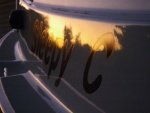
Short apnea periods, like 10 seconds do not usually result in very low saturation dips, 2-4 percent. I have seen apneas last nearly 2 minutes, (1:40 or 100 seconds). When running studies I would often stop my breath and see if I could hold it as long as the patients apnea was. A long event 45 seconds or longer generally results in a much more significant desaturation. I have seen desats down into the 40's. Those events are usually terminated with a fairly big snort and gasp.
Most of the time, even short apneic events will cause a brain arousal, causing the brain to wake up, and then go back into sleep through the stages, and that is what causes the frequent daytime sleepiness associated with sleep apnea. There are multiple causes of apnea, so it is not always obstructive (the kind most associated with snoring), but all sleep apneas are treatable. The oxygen desaturation is dependent on 2 things: The length of time there is no air movement, and the condition of the pulmonary system, i.e., young healthy lungs will hold the saturation higher longer than older, less healthy or damaged lungs.
The Medicare standard is that they treat anyone with an AHI of 5 or greater. With proper effective treatment the AHI should come in well under 5. Colby, with your 0.2 to 3.0 range is a very good result. My personal report was an AHI of close to 50, desats to 70-ish (Which was the main cause of the severe morning headaches) and with my CPAP I get a morning score range of 0.1 to about 0.7 and generally it is 0.2 to 0.3. No morning headache, and no daytime sleepiness.
Harvey
SleepyC :moon

Pat Anderson
New member
Bingo, you all got it!
I needed the Sleep Study on direction of my surgeon. We are planning for total replacement of my right knee at the end of February or early March. I am now three months downstream from my left knee total replacement. While I was in the hospital after the left knee, my blood oxygen level went in the toilet whenever I drowsed or went to sleep. I was diagnosed with hypoxemia. They sent me home with a prescription for an oxygen concentrator. The doc told me to get a sleep study. I fiddled around and put it off, but in order to keep the surgery date, I finally got a referral, approval from insurance, and made the appointment.
I got to the sleep lab in Bellingham at 8:30 p.m. on the 31st. It took the tech about an hour to wire me up. I think there was only one part of my anatomy where he did NOT put an electrode, and you can guess where that was! While he was wiring me up, there was a fair amount of chit-chat! He had actually read about our 2017 Great Loop in the newspaper, and he had seen my brother-in-law launching Crabby Lou at Blaine. He wants a C-Dory 22! He asked if I wanted a sleeping pill, and I accepted the offer. I was in bed at 10:00 p.m., and out like a light in maybe 10 minutes.
I woke up once at 4:00 a.m. for a bathroom break, and went right back to sleep. The next thing I knew, he was telling me over the intercom that it was 5:30 a.m. and time to get up! I was on my way home by 6:00 a.m. No breakfast, just coffee!
Anyway, I will have the report based on all the computer data some time this week. More to follow!
I needed the Sleep Study on direction of my surgeon. We are planning for total replacement of my right knee at the end of February or early March. I am now three months downstream from my left knee total replacement. While I was in the hospital after the left knee, my blood oxygen level went in the toilet whenever I drowsed or went to sleep. I was diagnosed with hypoxemia. They sent me home with a prescription for an oxygen concentrator. The doc told me to get a sleep study. I fiddled around and put it off, but in order to keep the surgery date, I finally got a referral, approval from insurance, and made the appointment.
I got to the sleep lab in Bellingham at 8:30 p.m. on the 31st. It took the tech about an hour to wire me up. I think there was only one part of my anatomy where he did NOT put an electrode, and you can guess where that was! While he was wiring me up, there was a fair amount of chit-chat! He had actually read about our 2017 Great Loop in the newspaper, and he had seen my brother-in-law launching Crabby Lou at Blaine. He wants a C-Dory 22! He asked if I wanted a sleeping pill, and I accepted the offer. I was in bed at 10:00 p.m., and out like a light in maybe 10 minutes.
I woke up once at 4:00 a.m. for a bathroom break, and went right back to sleep. The next thing I knew, he was telling me over the intercom that it was 5:30 a.m. and time to get up! I was on my way home by 6:00 a.m. No breakfast, just coffee!
Anyway, I will have the report based on all the computer data some time this week. More to follow!
colbysmith
Active member
Colby, with your 0.2 to 3.0 range is a very good result
Thanks Harvey for the explanation on all that. I will say, up until maybe two years ago, my AHI was routinely less than .4. Seems like sometime not to long after getting a new Cpap machine (I had the Resmed S9 I believe, and I love that one. I actually have 2 of those, older, one that I travel with on the boat. My new one is a Dream Machine, and I really don't care for it as much. But it's what the insurance pays for, so that's the one I have as my main unit here at home.), my AHI started climbing a bit. Now it seems to wonder around more as I indicated earlier. When I use my old Resmed, it seems to normally stay under 1, but I have had it up higher a few times. Maybe just a bit higher AHI as I get older. The doc says I'm still doing fine under 5, so guess I'll just be happy with my numbers. Colby
Pat Anderson":1x89xs0r said:... He asked if I wanted a sleeping pill, and I accepted the offer. I was in bed at 10:00 p.m., and out like a light in maybe 10 minutes.
...
I never had this test, but I would've thought a sleeping would skew the results. But then again, trying to sleep (without a pill) in a strange place with stuff going on around you, probably skews the results too.
Pat, your experience sounds like it is supposed to sound. And as to that part they didn't hook up, well, they used to :shock: Had to do with REM confirmation and some other functions :roll: I think you will be very happy with the new you.
Colby. There are a few things that could cause that variation. Mask fit is the most likely. A loose or mobile interface can allow a AHI increase if there is any leak. Sleep position is another cause for variation. Generally more supine time will increase the event count. Sleep duration can also cause a change. Varying the go to bed and wake up times can affect the count as the AHI generally increases later into the sleep cycle.
Thanks to you both, Pat and Colby for sharing about this subject. Sleep is important and healthy sleep makes life so much better.
Check the tag line. It is True.
"Though in our sleep we are not conscious of our activity or surroundings, we should not, in our wakefulness, be unconscious of our sleep."
Harvey
SleepyC :moon
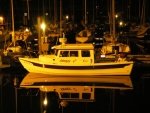
Colby. There are a few things that could cause that variation. Mask fit is the most likely. A loose or mobile interface can allow a AHI increase if there is any leak. Sleep position is another cause for variation. Generally more supine time will increase the event count. Sleep duration can also cause a change. Varying the go to bed and wake up times can affect the count as the AHI generally increases later into the sleep cycle.
Thanks to you both, Pat and Colby for sharing about this subject. Sleep is important and healthy sleep makes life so much better.
Check the tag line. It is True.
"Though in our sleep we are not conscious of our activity or surroundings, we should not, in our wakefulness, be unconscious of our sleep."
Harvey
SleepyC :moon

ssobol":3o70ijxa said:Pat Anderson":3o70ijxa said:... He asked if I wanted a sleeping pill, and I accepted the offer. I was in bed at 10:00 p.m., and out like a light in maybe 10 minutes.
...
I never had this test, but I would've thought a sleeping would skew the results. But then again, trying to sleep (without a pill) in a strange place with stuff going on around you, probably skews the results too.
From one of my previous posts . . .
The process of sleeping pill administration varies from place to place, but most labs have some provision for that and it does not have any adverse affect on the sleep study results.". . . it is not unheard of to actually give the patient a mild sleep inducing medication if they do not fall asleep naturally within an hour or so. That is not counter productive to the PSG, (polysomnogram), and again, the information required is only available during the sleep stages of the patient."
Harvey
SleepyC :moon
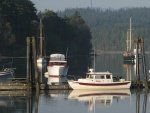
smckean (Tosca)
New member
Harvey,
I hope you don't mind me attempting to pick your medical brain; but I see my chance, so I'm going to grab it :wink: .
I suspect I have some level of sleep apnea, but I've never been tested to prove it. I do know that I sometimes awake with a start, usually with a "catch" in my throat, then I gasp a bit for air before falling back to sleep. I have found that if I sleep on my sides (my preferred position anyway) these episodes are kept to a minimum.
So my question is: Do you think that sleeping on one's side is an effective, although no doubt not perfect, way to "treat" sleep apnea?
I hope you don't mind me attempting to pick your medical brain; but I see my chance, so I'm going to grab it :wink: .
I suspect I have some level of sleep apnea, but I've never been tested to prove it. I do know that I sometimes awake with a start, usually with a "catch" in my throat, then I gasp a bit for air before falling back to sleep. I have found that if I sleep on my sides (my preferred position anyway) these episodes are kept to a minimum.
So my question is: Do you think that sleeping on one's side is an effective, although no doubt not perfect, way to "treat" sleep apnea?
Have deal with for 15 years. Wife about 5.
Machine works great to get good rest.
Otherwise tired all the time.
Big Issue with two machines running is power at anchorage.
Las spring build sound leading for Honda Gen 2000 and have flex exhaust
built in to go over stern. I am sure I would not be good neighbor if ran at night at anchorage.
Did not try out because of covid. 2 Cpaps breathing machine run one batter dead over night.
Maybe time to sell boat in 2021?
Good to get tested if symptoms. You can stop breathing in night and die from
extreme cases.
Machine works great to get good rest.
Otherwise tired all the time.
Big Issue with two machines running is power at anchorage.
Las spring build sound leading for Honda Gen 2000 and have flex exhaust
built in to go over stern. I am sure I would not be good neighbor if ran at night at anchorage.
Did not try out because of covid. 2 Cpaps breathing machine run one batter dead over night.
Maybe time to sell boat in 2021?
Good to get tested if symptoms. You can stop breathing in night and die from
extreme cases.
Salmon Fisher
Member
Isn't the use of a Lithium battery set up something that might work in a boat or rv when not hooked up to shore power?
Something like this?
https://www.jackery.com/products/explor ... er-station
Something like this?
https://www.jackery.com/products/explor ... er-station
Baxter, Yes, you can run 2 machines on a boat and not have a dead batter in the morning. Here is what makes a difference:
1. It will make a difference as to what size your batteries are.
2. It depends on how you are running the machines, 12VDC or on 110VAC via an inverter.
3. You cannot run a humidifier/heater due to the increased electrical draw.
4. It depends on how long you are running the CPAP’s, 6 hours or 9 hours.
I have run 2 CPAPS typically 6-7 hours a night, one at 15 cm and one at 10 cm pressures, no heater and get a battery voltage drop from 12.7-8 down to 12.3 or .4 in the mornings. They are both running on 12VDC power. I am running 2 Interstate RV/Marine Deep Cycle group 29 batteries. I do keep them on a BatteryMinder charger system when not out on the water. I do have a small GPS/plotter, an anchor light and sometimes a phone charger on for at least half the night.
Don’t sell the boat, unless you are tired of boating. If you are running a generator system, I’m wondering if you are running your CPAP’s through an inverter. There are other options and thanks for the plug on the Obstructive Sleep Apnea treatments. Yes, it works.
Harvey
SleepyC:moon
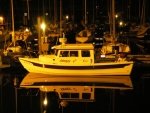
1. It will make a difference as to what size your batteries are.
2. It depends on how you are running the machines, 12VDC or on 110VAC via an inverter.
3. You cannot run a humidifier/heater due to the increased electrical draw.
4. It depends on how long you are running the CPAP’s, 6 hours or 9 hours.
I have run 2 CPAPS typically 6-7 hours a night, one at 15 cm and one at 10 cm pressures, no heater and get a battery voltage drop from 12.7-8 down to 12.3 or .4 in the mornings. They are both running on 12VDC power. I am running 2 Interstate RV/Marine Deep Cycle group 29 batteries. I do keep them on a BatteryMinder charger system when not out on the water. I do have a small GPS/plotter, an anchor light and sometimes a phone charger on for at least half the night.
Don’t sell the boat, unless you are tired of boating. If you are running a generator system, I’m wondering if you are running your CPAP’s through an inverter. There are other options and thanks for the plug on the Obstructive Sleep Apnea treatments. Yes, it works.
Harvey
SleepyC:moon

smckean (Tosca)":2oepupfk said:Harvey,
I hope you don't mind me attempting to pick your medical brain; but I see my chance, so I'm going to grab it :wink: .
I suspect I have some level of sleep apnea, but I've never been tested to prove it. I do know that I sometimes awake with a start, usually with a "catch" in my throat, then I gasp a bit for air before falling back to sleep. I have found that if I sleep on my sides (my preferred position anyway) these episodes are kept to a minimum.
So my question is: Do you think that sleeping on one's side is an effective, although no doubt not perfect, way to "treat" sleep apnea?
Sandy,
Yes, side sleep is an effective way to reduce or even eliminate the apnea occurrence. Most people with some level of Obstructive Sleep Apnea learn to sleep on their side out of necessity. That is why, in a lab sleep study, we have the patients sleep in both supine and side sleep positions to be able to see if there is an AHI difference dependent on position.
Personally, I slept on my side for most of my adult life. Turns out that after I started using my CPAP, I often wake up on my back. Not an uncommon result of CPAP use. As we age, we lose muscle tone and that results in increased obstructive sleep apnea. As that happens, we will begin to have events even when sleeping on the side, so side sleeping is a partial fix for a time, but not permanent.
The "awake with a start, usually with a "catch" in my throat, then I gasp a bit for air before falling back to sleep" scenario that you describe is fairly suggestive for positive OSA, obstructive sleep apnea. It would be worth diagnosing and treating, as untreated OSA leads to multiple other health issues that have a very downward spiral.
1. Hypertension
2. Obesity
3. Congestive heart failure
4. Atrial fibrillation
5. Stroke or TIA
6. Diabetis
And No, I don't mind answering questions about sleep. Next to C-Dorys, its about my favorite topic. WE all sleep, some better than others, but we all need good, healthy sleep, and it is achievable, with some level of effort and it is rewarding.
Harvey
SleepyC:moon
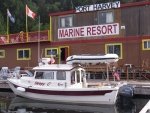
Pat Anderson
New member
Just got the call (6:45 p.m.) with the results of the sleep study - "severe sleep apnea"- 50-60 "events" per hour. Next step is the CPAP study, which will happen some time next week. The adventure begins...
I may have mislead my problem with maintaining our batteries using 2 sleep machines at night away from shore power. My Venture 23 has two Honda 50 hp outboards. They each only have 20 amp. Alternators. Adequate for normal use. I do dread then going dead as even though they can be hand started with a rope on flywheel I tested that once need to be much stronger than I am to spin fast enough.
So what I did last year as add a third batter exclusive to machines. Mounted it beneath passenger seat locker. Also hooked anchor winch to it. So leads not so long. It is joined to other batteries with a Blue Sea S-1 relay that only allows charging to Bat 3 when it is at capacity. And it will not allow Bat 3 to flow backwards to Bat 2. If you look on Blue Sea web site they will show wiring diagram.
I do take Honda 2000 generator along as back up. Made a box for it to deaden sound but has fan for cooling and flexible exhaust that goes over the stern. And have always carried jumper cables. I am sort of a belt and suspenders guy.
Last summer because of COVID we stayed near home. Two hours north of us is Big Horn River reservoir. You can go up 50 + miles. But no help up there
It is a steep canyon and no walking out. Remember when some of Powell’s men left the Colorado River Expedition? They hiked up canyon walls and were never seen again.
Even with all off roading we have done with Land Cruise we never go where we can’t walk out. That distance has decreased as age increased and artificial knees added. So unless another rig along some things we don’t do anymore.
First Land Cruiser 1978 came with a factory crank. Used it a couple times.
Well be safe out there. Being alive can be dangerous.
Hope this gives clearer picture. There are other solutions.
Baxter
I
So what I did last year as add a third batter exclusive to machines. Mounted it beneath passenger seat locker. Also hooked anchor winch to it. So leads not so long. It is joined to other batteries with a Blue Sea S-1 relay that only allows charging to Bat 3 when it is at capacity. And it will not allow Bat 3 to flow backwards to Bat 2. If you look on Blue Sea web site they will show wiring diagram.
I do take Honda 2000 generator along as back up. Made a box for it to deaden sound but has fan for cooling and flexible exhaust that goes over the stern. And have always carried jumper cables. I am sort of a belt and suspenders guy.
Last summer because of COVID we stayed near home. Two hours north of us is Big Horn River reservoir. You can go up 50 + miles. But no help up there
It is a steep canyon and no walking out. Remember when some of Powell’s men left the Colorado River Expedition? They hiked up canyon walls and were never seen again.
Even with all off roading we have done with Land Cruise we never go where we can’t walk out. That distance has decreased as age increased and artificial knees added. So unless another rig along some things we don’t do anymore.
First Land Cruiser 1978 came with a factory crank. Used it a couple times.
Well be safe out there. Being alive can be dangerous.
Hope this gives clearer picture. There are other solutions.
Baxter
I
colbysmith
Active member
Wanted to share a little more about sleep apnea, as I've seen no comments about snoring yet. As I stated, at the time I had my sleep test, they said I was borderline severe with 90 events an hour. (Either I've forgotten the number, or they've changed what they consider severe). Prior to that study, I was not a snorer. Nor was I someone that would fall asleep during the day. In fact, I couldn't even nap... But I was a restless sleeper, and did "jerk" once in a while. What caused me to go in was my new bride, an RN, who said I should go get a sleep study because I would stop breathing briefly at night. Ok, fine, whatever... Now as a commercial airline pilot, that diagnoses brought up some other issues. Like loss of medical until it could be documented I was under appropriate care to resolve the condition, or passed a stay awake study. (I hear they put you in a dark room, turn off all the lights, and play soothing music, and if you fall asleep, you lose.) At that point, Rosanne felt bad thinking she could have just married a soon out of work pilot because of her concern for my health and encouragement to go get a sleep study! Fortunately, the company had a good flight nurse who worked with me to get the documentation and I was only off work for a month. My medication was the CPap machine, and reports showing under 5 AHI (in my case at the time I was almost always under .5). Since then, for anyone with DOT certification, Sleep Apnea has become a big buzz word. Even with my DOT physical for driving school bus, I now have to have my physical exam every year rather than every two years to maintain my certification because I was at one time diagnosed with Sleep Apnea. It did take a short time to get use to sleeping with the headgear on at night, but I do sleep much better with it than without it. I also found for me personally, the nasal pillows is much better than the full mouth/nose mask. (The Nasal Pillows is just a soft piece that fits at the edge of your nostrils.) Colby
Glad you got help. Still have my Private Pilots license but lost medical years ago. So on no fly list. Miss it a lot but, we have the Venture 23.
Stay well everyone. Sleep apa can be contolled so get help if you need it.
WY is 6 F today with - o days ahead. Need to plow snow this pm just 5”.
So all you in toasty climates be happy.
Stay well everyone. Sleep apa can be contolled so get help if you need it.
WY is 6 F today with - o days ahead. Need to plow snow this pm just 5”.
So all you in toasty climates be happy.

